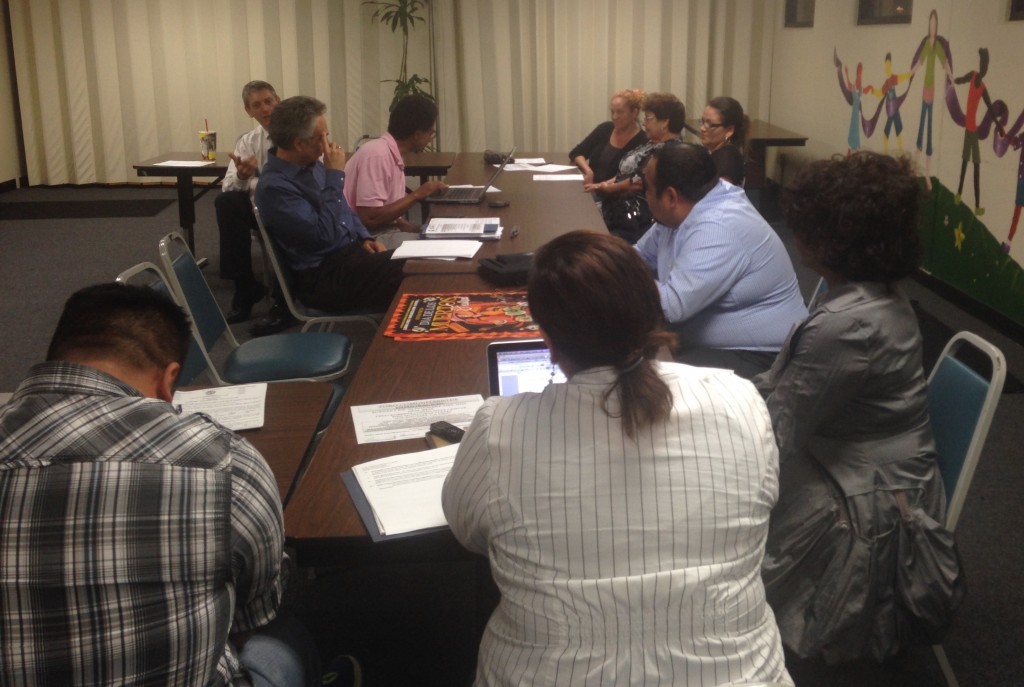
The South Central Neighborhood Council and community members discussed possible courses of action on the Reef Project Environmental Impact Report on Tuesday, October 20, 2015. | Rachel Cohrs, Intersections South L.A.
With the deadline for public comment on more than 800 pages of documentation on the proposed Reef Project development approaching, the South Central Neighborhood Council said it needs more time to sort through the information.
“The language is hard to understand, and it’s just too much,” said council member Martha Sanchez. “I want to be able to understand what I’m reading. . .I want to have time for an expert who knows more to explain what this means to community members.”
The Reef Project is a $1.2 billion development of high-rise condos, commercial space, and a hotel to be erected in South LA. The project has received some pushback from community residents.
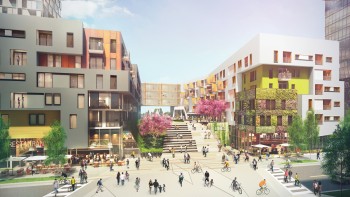
A rendering of the proposed $1.2 billion Reef Project development. | Courtesy of Gensler and PATTERNS
The paperwork under review is the Environmental Impact Report that describes the different community impacts the project could have on nearby residents. The Los Angeles Department of City Planning’s summary of the report describes that the Reef Project’s largest disruptions will affect local aesthetics, air quality, noise, traffic and transportation.
The report, released Sept. 17, is available solely in English, and is only available by either visiting the Department of City Planning office, visiting one of four library locations, or paying $7.50 for a copy on CD.
“Looking at this neighborhood, for [the document] only to be provided in English is absurd. We have lots of monolinguistic Spanish-speaking people around here. It’s hard enough for the average person to understand, not to mention if they don’t speak the language,” council member John Parker said.
The South Central Neighborhood Council has authorized a committee to submit a public comment before the Nov. 2 deadline. The statement will be based on community input the council has gathered since its town hall meeting last month. The exact content has yet to be determined.
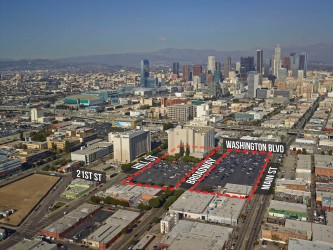
A visual map of the location of the Reef Project south of downtown Los Angeles. | Courtesy of Gensler and PATTERNS
The council also plans to submit a request to the city to extend the deadline, but the prospects of success look grim after another organization’s request was denied.
Reef Project representative Will Cipes said that although the official deadline for comment may pass on the report, the developers will still be open to community insight regarding a community benefits package attached to the project.
According to Cipes, however, the community benefits package with the city isn’t quite concrete.
“We have talked about the broad concept of an agreement [on a benefits package] but we have not talked specifics,” Cipes said.
Cipes estimated that the official city council vote on the development will likely be at least six months away.
The Environmental Impact Report didn’t measure how much potential displacement the existence of market-rate apartments could cause in the surrounding area. Preliminary analysis conducted by SAJE, a local nonprofit advocating for tenant rights and affordable housing, identified 4,445 individuals within a two-mile radius of the Reef Project who could be at “very high” or “high” risk for financial strain and/or displacement if the development is built.
To educate community members and provide a place for residents to voice concerns about the project, the South Central Neighborhood Council is organizing a community forum on gentrification Wednesday, Oct. 28 at Santee Education Complex at 6 p.m.
“We want to do something that is really going to benefit people,” South Central Neighborhood Council President Jose Reyes said. “We don’t want to do something just to say we did something.”










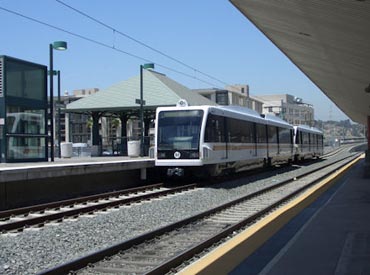 By Anita Little
By Anita Little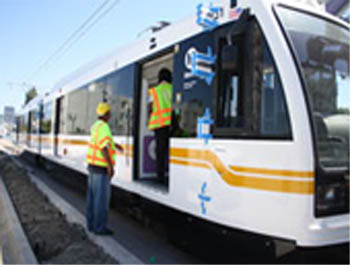 “This is just a slow walking speed type test,” said Jim Jasmin, Metro’s start-up manager. “When we get to an object, if it looks iffy, we’ll stop. We’ll move up slowly until we get to it and then check the measurements and go on.”
“This is just a slow walking speed type test,” said Jim Jasmin, Metro’s start-up manager. “When we get to an object, if it looks iffy, we’ll stop. We’ll move up slowly until we get to it and then check the measurements and go on.”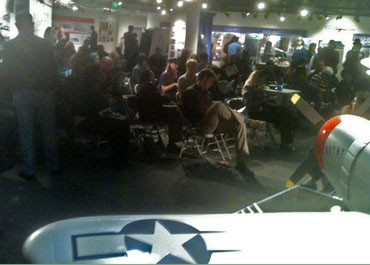 The good news for South Bay residents is that the Metro light rail is expanding. The bad news is that the new line, which will connect Exposition Boulevard to LAX Airport, comes with some extra baggage.
The good news for South Bay residents is that the Metro light rail is expanding. The bad news is that the new line, which will connect Exposition Boulevard to LAX Airport, comes with some extra baggage.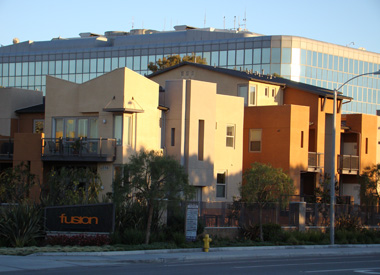 A proposed new Metro rail yard has raised concern among Hawthorne residents, who say they were not sufficiently notified about the site. They fear the site may bring health risks to the surrounding residential communities.
A proposed new Metro rail yard has raised concern among Hawthorne residents, who say they were not sufficiently notified about the site. They fear the site may bring health risks to the surrounding residential communities.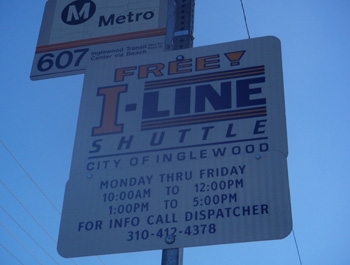 Inglewood residents were relieved on Monday when the city’s free trolley service added an additional seven daily stops throughout the city. This expansion follows a year-long protest by city residents to keep the service from being eliminated by budget cuts.
Inglewood residents were relieved on Monday when the city’s free trolley service added an additional seven daily stops throughout the city. This expansion follows a year-long protest by city residents to keep the service from being eliminated by budget cuts. 






